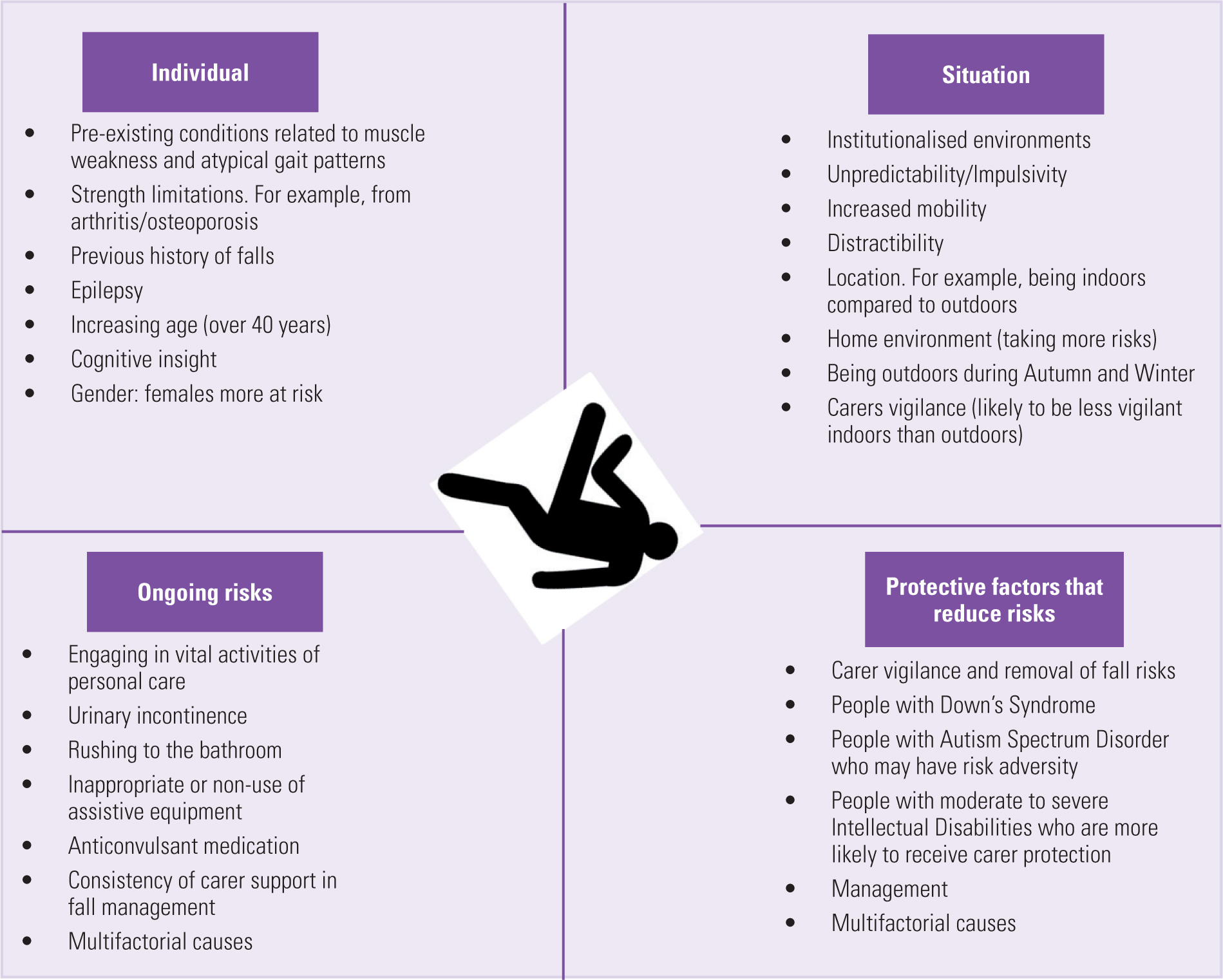Dementia Fall Risk Can Be Fun For Anyone
Table of ContentsSome Known Incorrect Statements About Dementia Fall Risk Dementia Fall Risk Fundamentals ExplainedDementia Fall Risk Things To Know Before You Get ThisThe Dementia Fall Risk Diaries
A fall danger evaluation checks to see just how likely it is that you will certainly fall. It is mainly provided for older adults. The analysis normally consists of: This includes a series of questions regarding your general wellness and if you have actually had previous falls or problems with balance, standing, and/or strolling. These tools check your toughness, balance, and stride (the means you stroll).STEADI includes testing, assessing, and treatment. Treatments are recommendations that may lower your threat of falling. STEADI includes three steps: you for your danger of succumbing to your threat factors that can be improved to try to stop drops (as an example, equilibrium problems, impaired vision) to reduce your risk of falling by utilizing efficient approaches (for instance, giving education and learning and resources), you may be asked numerous inquiries consisting of: Have you dropped in the previous year? Do you feel unsteady when standing or walking? Are you bothered with falling?, your provider will test your stamina, equilibrium, and stride, making use of the adhering to loss analysis devices: This examination checks your stride.
After that you'll sit down once more. Your service provider will certainly inspect for how long it takes you to do this. If it takes you 12 seconds or more, it may mean you go to higher risk for a fall. This test checks toughness and balance. You'll being in a chair with your arms crossed over your chest.
The settings will obtain more challenging as you go. Stand with your feet side-by-side. Relocate one foot halfway forward, so the instep is touching the huge toe of your various other foot. Move one foot fully in front of the various other, so the toes are touching the heel of your other foot.
The Ultimate Guide To Dementia Fall Risk
A lot of falls take place as a result of several adding aspects; therefore, handling the risk of falling begins with determining the elements that add to drop threat - Dementia Fall Risk. Several of one of the most pertinent threat aspects include: History of previous fallsChronic clinical conditionsAcute illnessImpaired gait and equilibrium, reduced extremity weaknessCognitive impairmentChanges in visionCertain risky medicines and polypharmacyEnvironmental elements can likewise boost the risk for drops, including: Inadequate lightingUneven or harmed flooringWet or slippery floorsMissing or damaged hand rails and get hold of barsDamaged or poorly fitted equipment, such as beds, mobility devices, or walkersImproper use of assistive devicesInadequate supervision of individuals residing in the NF, including those that web display aggressive behaviorsA effective autumn threat management program requires a detailed clinical assessment, with input from all participants of the interdisciplinary group

The treatment plan need to also consist of interventions that are system-based, such as those that advertise a risk-free atmosphere (proper lights, handrails, get hold of bars, etc). The performance of the treatments ought to be reviewed regularly, and the care plan modified as needed to reflect adjustments in the autumn risk evaluation. Executing an autumn risk administration system making use of evidence-based best technique can decrease the occurrence of drops More hints in the NF, while limiting the capacity for fall-related injuries.
Some Known Factual Statements About Dementia Fall Risk
The AGS/BGS guideline recommends screening all adults matured 65 years and older for autumn threat every year. This screening is composed of asking patients whether they have dropped 2 or even more times in the past year or looked for clinical attention for a fall, or, if they have actually not fallen, whether they really feel unstable when strolling.
People who have actually dropped as soon as without injury must have their balance and gait assessed; those with stride or balance irregularities should obtain added assessment. A background of 1 fall without injury and without gait or equilibrium issues does not warrant further assessment beyond ongoing yearly autumn danger screening. Dementia Fall Risk. An autumn risk analysis is needed as part of the Welcome to Medicare evaluation

7 Simple Techniques For Dementia Fall Risk
Recording a drops history is among the quality signs for loss avoidance and management. A critical component of danger assessment is a medication testimonial. Numerous classes of medicines increase fall threat (Table 2). copyright drugs in specific are independent forecasters of drops. These medications have a tendency to be sedating, alter the sensorium, and impair equilibrium and stride.
Postural hypotension can commonly be minimized by reducing the dosage of blood pressurelowering medicines and/or quiting medicines that have orthostatic hypotension as an adverse effects. Use above-the-knee assistance hose and copulating the head of the bed elevated may also reduce postural reductions in blood pressure. The preferred elements of a fall-focused health examination are received Box 1.

A Yank time higher than or equal to 12 seconds recommends high autumn risk. Being not able to stand up from a chair of knee height without utilizing one's arms indicates raised loss danger.